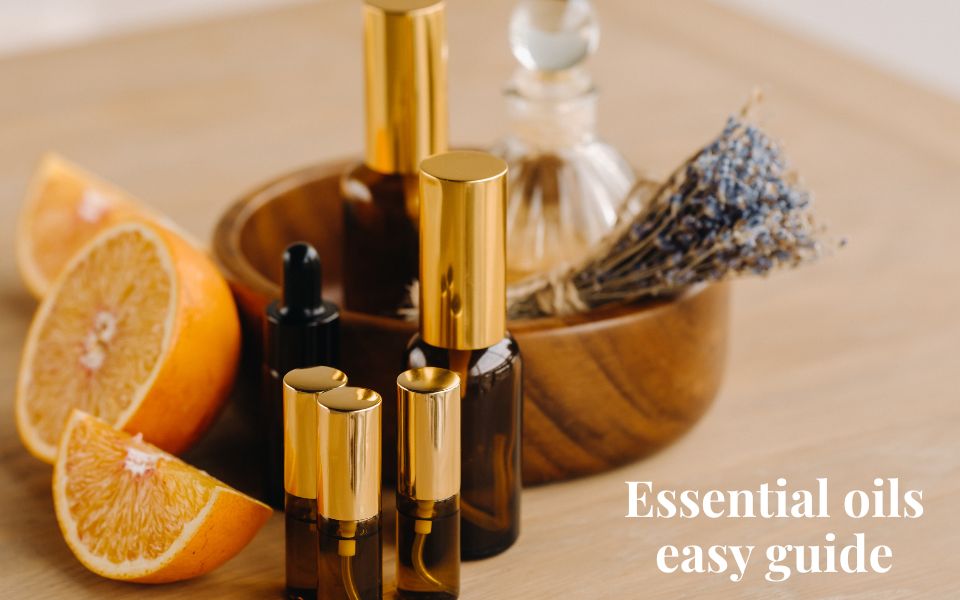Essential Oils: A Comprehensive Guide to Their Use in Cosmetics and Aromatherapy
Posted on 30 May 2025 by Ellemental Team — 5 min

Essential oils have long captivated humankind with their potent aromas and natural therapeutic properties. Extracted from the flowers, leaves, bark, resin, or roots of aromatic plants, essential oils are highly concentrated substances that play a vital role in both natural skincare and wellness traditions across the globe.
This comprehensive guide will provide a deep dive into the world of essential oils, from their historical background and extraction methods to their modern-day applications in cosmetics and aromatherapy. Whether you're a cosmetic formulator, wellness enthusiast, or simply exploring the benefits of natural ingredients, understanding essential oils is key to unlocking their full potential.
A Brief History of Essential Oils
Essential oils date back thousands of years, with records of their use found in ancient Egypt, India, and China. Egyptians used aromatic oils for embalming, religious rituals, and personal hygiene. In traditional Chinese medicine and Ayurveda, essential oils played a central role in healing practices.
In the West, the distillation of plant materials began around the 10th century with Persian polymath Avicenna, who perfected steam distillation techniques. The term "aromatherapy" was coined in the 20th century by French chemist René-Maurice Gattefossé, who documented the medicinal uses of essential oils in clinical settings.
Methods of Extraction
The quality and therapeutic properties of essential oils depend significantly on how they are extracted. The main extraction methods include:
Steam Distillation: The most common method, where steam is passed through plant material to release volatile compounds. Ideal for lavender, eucalyptus, and rosemary.
Cold Pressing: Used mainly for citrus oils like lemon and orange, this method mechanically presses oils from the rind without heat.
Solvent Extraction: Applied to delicate flowers like jasmine that don't tolerate high heat. Solvents dissolve the aromatic compounds, which are later purified. Resulting products are often called absolutes.
CO2 Extraction: A modern method using pressurized carbon dioxide to extract oil without heat, yielding a product closer to the original plant composition.
Key Uses of Essential Oils
1. In Cosmetics and Skincare
Essential oils serve both functional and sensorial roles in cosmetic formulations:
- Antimicrobial: Tea tree and thyme oils offer natural antibacterial and antifungal properties.
- Anti-inflammatory: Chamomile and lavender help soothe irritated or sensitive skin.
- Astringent: Witch hazel and rosemary are used to tone oily or acne-prone skin.
- Antioxidant: Oils like frankincense and myrrh contribute to anti-aging formulations.
Essential oils are often used in serums, facial oils, masks, creams, and even shampoos and soaps.
Dilution is essential: Never apply undiluted essential oils directly on the skin. They should be mixed in a carrier oil (e.g., jojoba, almond, or argan) at a safe concentration, typically 0.5% to 2% for facial applications.
2. In Aromatherapy
Aromatherapy utilizes essential oils to enhance physical and emotional well-being. Inhalation or topical application can influence mood, reduce stress, and support respiratory or immune health.
- Lavender: Calming, ideal for sleep support and anxiety relief.
- Peppermint: Invigorating, often used for headaches and focus.
- Eucalyptus: Supports respiratory function and immune defense.
- Bergamot: Uplifting and balancing, useful for mood disorders.
Essential oils can be diffused in a room, added to a bath, or used in massage therapy with appropriate dilution.
DIY Recipes with Essential Oils
Here are a few simple formulations to incorporate essential oils safely and effectively at home:
1. Balancing Facial Serum
- 30 ml jojoba oil
- 3 drops tea tree essential oil
- 2 drops lavender essential oil
Gently massage a few drops onto cleansed skin, avoiding eye area. Ideal for acne-prone or combination skin.
2. Relaxing Bath Blend
- 1 cup Epsom salt
- 5 drops lavender
- 3 drops bergamot
- 2 drops Roman chamomile
Mix oils into the salt, then add to warm bathwater. Soak for at least 20 minutes.
3. Air-Purifying Room Spray
- 100 ml distilled water
- 1 tsp witch hazel
- 10 drops lemon
- 8 drops eucalyptus
- 5 drops rosemary
Combine in a spray bottle and shake well before each use. Avoid direct inhalation or contact with eyes.
Buying Tips and Red Flags
Not all essential oils on the market are created equal. Here are key factors to consider:
- Latin Name: Reputable suppliers list the botanical name (e.g., Lavandula angustifolia) to avoid confusion with similar species.
- Country of Origin: Terroir affects chemical composition and quality.
- Extraction Method: Look for transparency about how the oil is obtained.
- Purity: Avoid products labeled as "fragrance oil" or those diluted with carrier oils unless clearly stated.
- Packaging: Essential oils should be in dark glass bottles to protect against UV degradation.
Watch out for scams:
- Unrealistically low prices
- No batch or GC/MS test information
- Vague or missing botanical details
Safety Precautions
- Patch test before use.
- Avoid use on broken or irritated skin.
- Not all essential oils are safe for pregnancy, infants, or pets.
- Keep away from eyes, mucous membranes, and direct sun exposure if using photosensitive oils like citrus.
Always consult a healthcare provider or certified aromatherapist for medical concerns.
Final Thoughts
Essential oils offer a bridge between the botanical world and holistic self-care. Their versatility in both skincare and aromatherapy makes them indispensable tools for those pursuing a natural and mindful lifestyle. By understanding their origins, properties, and proper use, you can confidently integrate essential oils into your daily routine.
When sourced responsibly and used knowledgeably, essential oils become more than just fragrant additions—they are powerful allies in beauty and wellness.